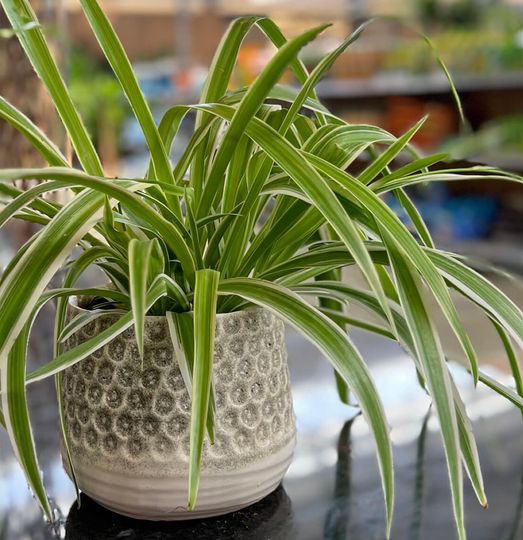Introduction to the Spider Plant (Chlorophytum comosum)
One of the most beloved and versatile houseplants around, the spider plant (Chlorophytum comosum) is a true indoor gardening champion. Known for its distinctive, arching leaves that gracefully spill over the edge of pots or baskets, the spider plant is a common sight in homes, offices, and other indoor spaces. Its scientific name, Chlorophytum comosum, refers to the plant’s lush green foliage and its ability to produce long, slender “spider-like” offshoots or “pups” that make it stand out in any room.
Also called ribbon plant or airplane plant, the spider plant thrives in a variety of conditions, making it an ideal plant for both novice gardeners and experienced horticulturists. But the spider plant isn’t just about looks – it’s also one of the most effective plants for improving indoor air quality. Let’s take a deeper dive into what makes the spider plant so special.
Easy Care and Hardy Nature: The Spider Plant’s Winning Traits
A Low-Maintenance Wonder
One of the main reasons the spider plant is so popular is its ease of care. It is incredibly hardy and can tolerate a range of indoor conditions, making it a perfect fit for a variety of spaces. Here are some key care tips that make the spider plant a great choice:
- Light: The spider plant prefers bright, indirect light, though it can also adapt to lower light levels. Just be cautious not to expose it to direct sunlight for long periods, as this can scorch its delicate leaves.
- Watering: Water the spider plant regularly but allow the soil to dry out between waterings. Overwatering can lead to root rot, so it’s important to ensure the plant’s pot has good drainage.
- Temperature: The spider plant thrives in temperatures between 60°F to 75°F (15°C to 24°C). It can tolerate cooler temperatures, but sudden cold drafts should be avoided.
- Humidity: While spider plants appreciate moderate humidity, they are adaptable and can survive in dry indoor air, making them perfect for most homes or offices.
Resilient and Long-Lived
Spider plants are quite resilient and can survive periods of neglect. Whether you’re a busy professional or a forgetful plant parent, this plant can bounce back from a little overwatering or neglect. It’s also relatively pest-resistant and not prone to major issues like many other houseplants. When cared for properly, a spider plant can thrive for many years, becoming a long-term addition to your indoor space.
The Aesthetic Appeal: Why the Spider Plant is a Showstopper
Elegant Foliage and Unique Structure
The spider plant’s unique leaf structure is one of its most striking features. The plant’s long, slender, arching leaves emerge from a central rosette, often striped with green and white or yellow hues. These leaves grow in a way that creates a lush, vibrant look that fills any space with greenery.
As the plant matures, it produces long, thin stems or “runners” that sprout small baby plants, known as “pups.” These pups, which resemble tiny versions of the parent plant, dangle down like spiders on a web, giving the plant its signature appearance. The trailing leaves and pups make the spider plant perfect for hanging baskets or decorative pots placed on high shelves or tables.
Easy Propagation: Make More Plants!
One of the most rewarding aspects of owning a spider plant is its ability to reproduce easily. The pups that grow from the long stems can be cut off and rooted in water or soil, allowing you to grow more spider plants. This makes it an ideal plant for sharing with friends or spreading around your home. In fact, many people have a collection of spider plants that continue to grow and propagate over time, creating a thriving indoor jungle.
Air Purifying Powers: The Spider Plant’s Secret Superpower
CONTINUE READING IN PAGE 2




